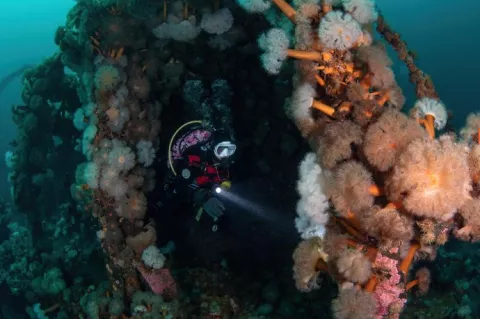Newfoundland: Cold Water, Warm People & Endless Adventure
Newfoundland, part of the easternmost province of Canada, is a place of wild nature where one can dive on WWII wrecks, in historic iron-ore mines, birdwatch, snorkel with humpback whales and kayak with minke whales. Brandi Mueller shares her adventure there.





